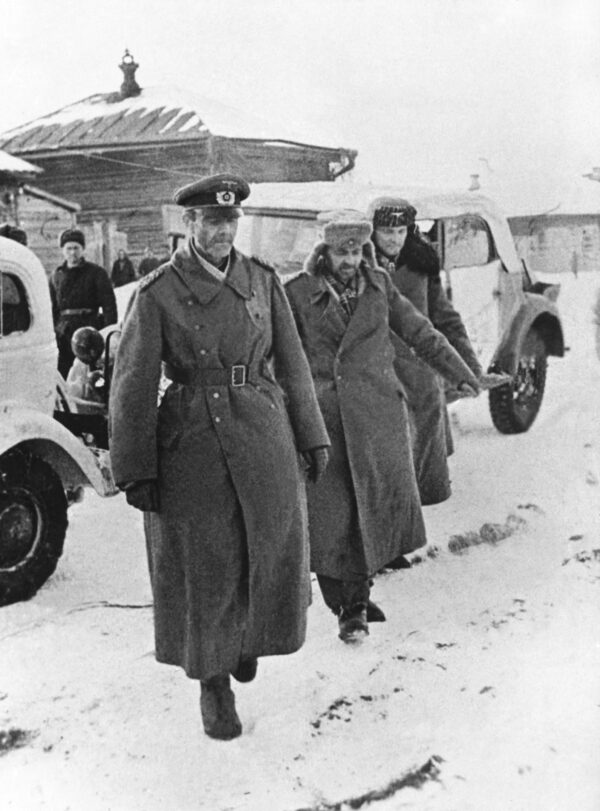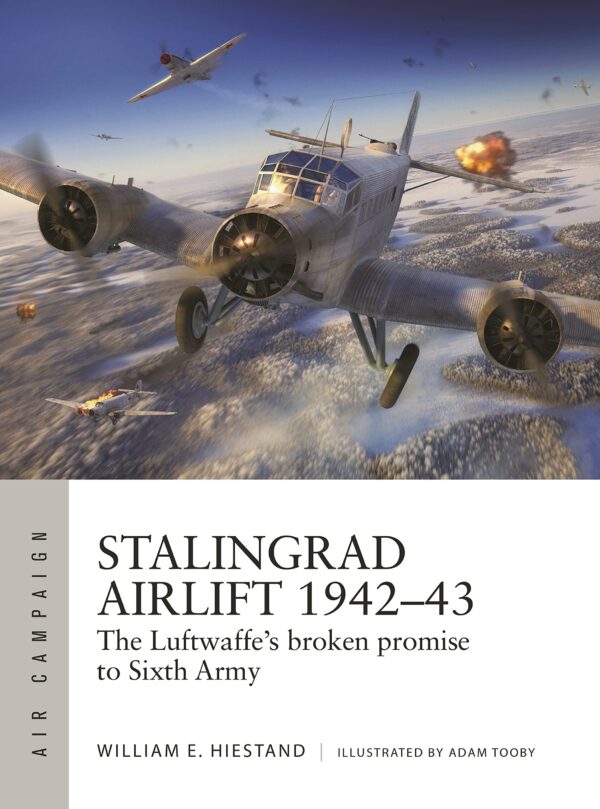The Luftwaffe’s Broken Promise to Sixth Army’
Distressed Patriotic Flag Unisex T-Shirt - Celebrate Comfort and Country $11.29 USD Get it here>>

Operation Barbarossa, which launched the German invasion into the Soviet Union during World War II, proved to be one of the pivotal mistakes that led to Nazi Germany’s ultimate defeat.
The Germans had launched their invasion in the summer of 1941, and by the winter of that year it had become clear how colossal of a mistake the invasion had been. William E. Hiestand takes the reader on an in-depth journey, not into the invasion, but what happened once the German Sixth Army found themselves deep in Soviet territory, specifically Stalingrad.
“Stalingrad Airlift 1942–43: The Luftwaffe’s Broken Promise to Sixth Army” is an insightful breakdown of what went wrong with the promises made by the German High Command to the Sixth Army. After Adolf Hitler’s command to the army to “stand fast” in Stalingrad, Hiestand explains what the Germans planned to do in order to make the stand last. He also explains with precise and necessary details how those plans unraveled and resulted in a disaster for the Sixth Army, the Luftwaffe, the war in the east, and the Nazi war machine as a whole.
Describing Events on Both Sides
Hiestand has assembled an easy to follow, yet thorough explanation of how the promised airlift into Stalingrad collapsed. As he explains, the airlift plan was rather haphazardly coordinated. Commanders placed in control of the airlift plan proved unfit to lead the massive undertaking and were replaced by others who also proved incapable. By the time the German High Command found the proper fit, it was too late.
Along with having to operate under ill-prepared leaders, the Sixth Army and the Luftwaffe had to combat the Soviet Army, Air Force (VVS), and weather. All three kept the Germans from being able to provide the necessary tonnage of fuel, ammunition, and rations for the 250,000 soldiers in Stalingrad.
Hiestand describes how the early months of the Stalingrad stand favored the Germans, as they controlled several airfields west of Stalingrad and the Luftwaffe displayed superiority over the VVS. Over time, however, the Soviet army surrounded the Sixth Army, destroyed the runways at the airfields and eventually retook them, and also achieved a more comparable level of aerial combat, which made German aerial transports of supplies far more risky and far less successful.
The Germans’ initial push into the Soviet Union to Stalingrad was unintentionally assisted by the Soviets. Hiestand explains how Joseph Stalin’s military purges had eliminated many experienced officers from the ranks. The pilots of the VVS were few and unprepared.
As Hiestand points out in the book, VVS pilots at times had as few as eight hours of flying experience (pilots with little experience were dubbed “take off and landing” because that was the sum of their aerial combat skills), while pilots of the Luftwaffe averaged approximately 300 hours. Soviet planes also had to rely on wing or hand signals from their flight leaders for communication. In many cases, pilots were paying more attention to their flight leaders than the enemy. Hiestand points out that the VVS command adopted many of the German methods, including flight formation and installing radios in the planes.
In the winter of 1942, the weather in Stalingrad proved just as deadly and destructive, if not more so, as the Soviet military. In conjunction with the weather, though, Hiestand details how the VVS created an air blockade over Stalingrad by the creation of an “ace regiment” from the 9th Guard’s best pilots.
With a technologically advancing Soviet army and air force, worsening weather, and a more competent and confident Soviet command, the Germans also faced another problem: Hitler. The Fuhrer’s orders to remain in Stalingrad, even if encircled, and the lack of pushback from generals, whom Hiestand refers to as “sycophants,” kept the German Sixth Army in a rapidly eroding position.
The stubbornness and hubris of the German High Command would ultimately result in the loss of over 500,000 Axis troops, including most of Sixth Army, along with massive losses in German aircraft. By the end of 1950, when German troops of the Sixth Army were allowed to return home, only 6,000 remained.

An Insightful Study of the Stalingrad Airlift
“Stalingrad Airlift 1942–43” is a great addition to the study of World War II, especially on the eastern front. Hiestand’s book is full of graphics that visually break down German aircraft capabilities, timelines of gains and losses throughout the Battle of Stalingrad, and the expectations and fulfillments of the airlift.
The book provides visual maps with legends concerning the airlift and the air blockade. There are also plenty of photographs of German and Soviet aircraft, soldiers and officers, and moments from the battles.
Hiestand’s work is a highly recommended read for World War II enthusiasts and those who would like a quick, yet thorough look at what happened in Stalingrad during the war. A very enjoyable read.

‘Stalingrad Airlift 1942–43: The Luftwaffe’s Broken Promise to Sixth Army’
By William E. Hiestand
Osprey Publishing, Jan. 17, 2023
Paperback: 96 pages




